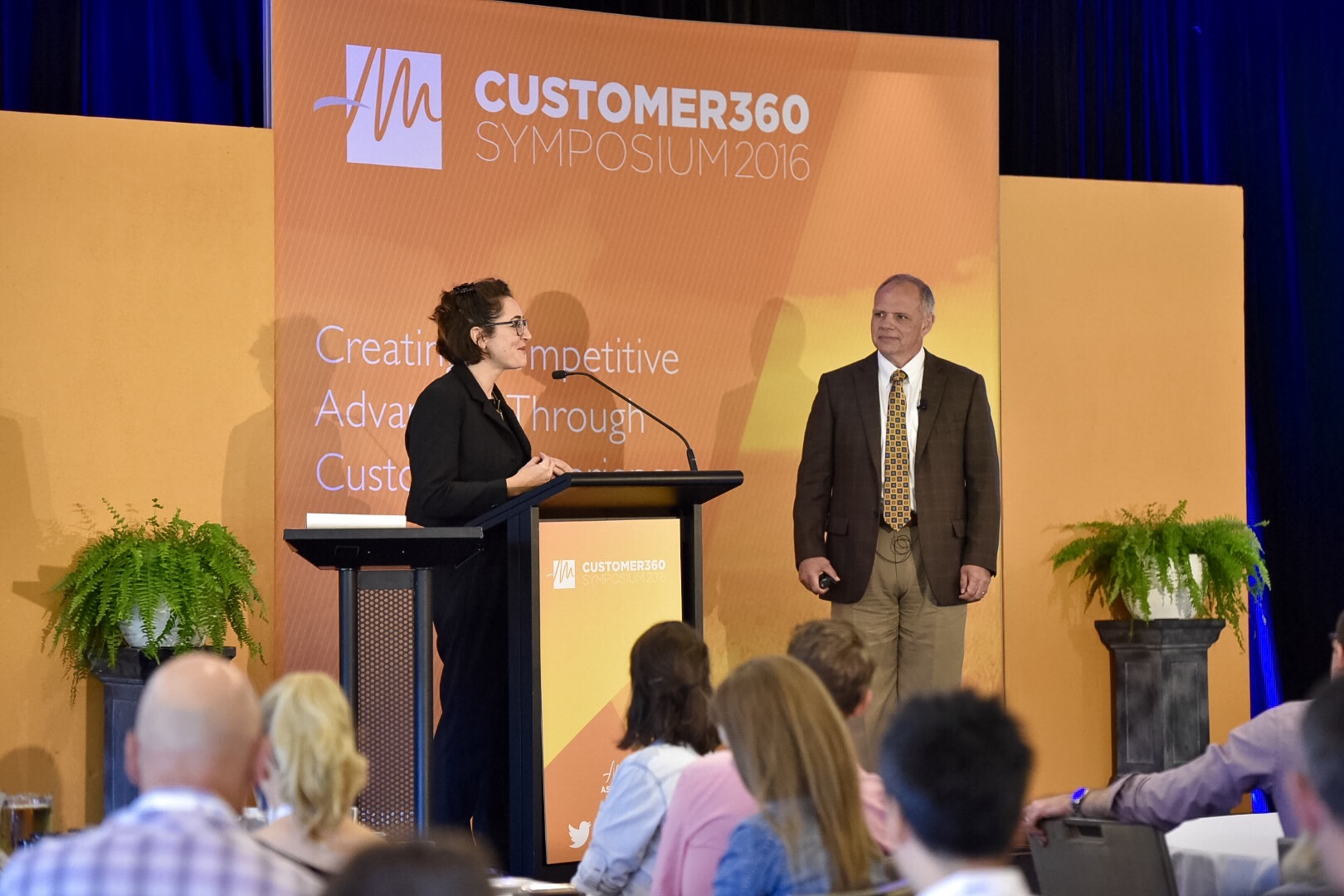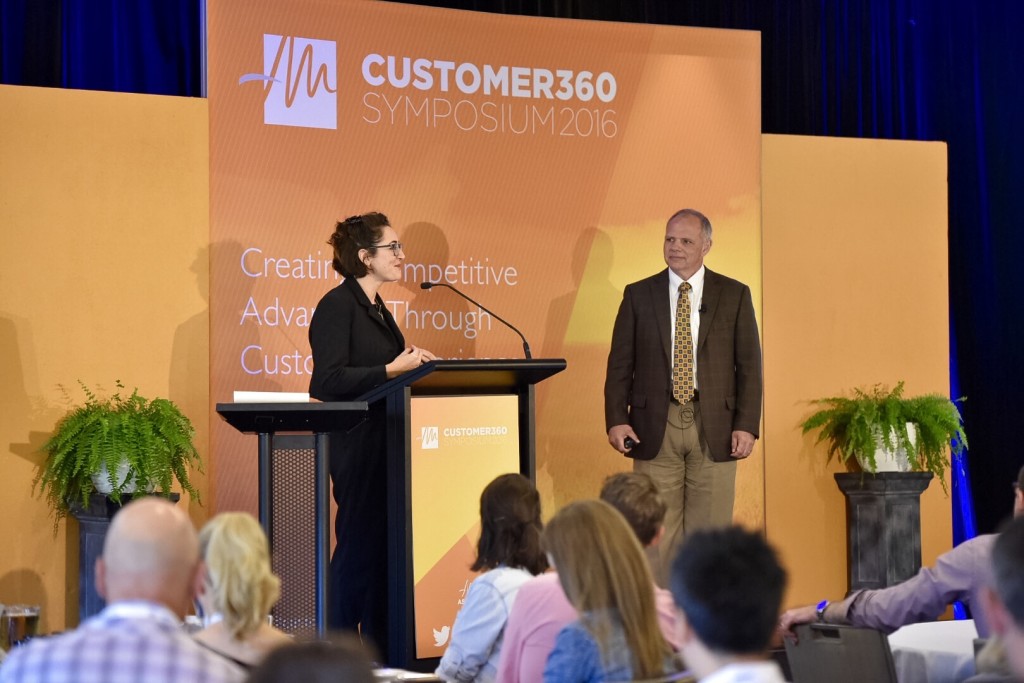
From choosing CX KPIs to defining them and understanding how your contact centre fits into the equation, we take a look at the top five takeaways from this year’s symposium.
Be prepared to deliver your best customer experience when it’s not business as usual
We could spend all day sitting around talking about journey mapping, frameworks and models – and at the Customer 360 Symposium we did – but what we’re likely focusing on is delivering customer experience when it’s business as usual. As Khaled Akl, Global Vice President Customer Development, Unilever pointed out, much of those processes go out the window when crisis hits. And Akl would know. The Unilever executive found himself managing the company’s operations in the Middle East during the Arab Spring. Akl borrows a military term and talks about the conditions being VUCA: Volatile, Uncertain, Complex, Ambiguous. “Crisis or VUCA situations can be anything that causes business interruptions such as the London underground drivers going on strike,” he said.
During the Arab Spring, banks shut down. There was no internet or mobile phone access, ports were closed and fuel was in short supply. Yet Unilever made the decision to continue operations in the region. In order to do that, Akl found himself working with unlikely partners such as his competitors and the army to bring food and other Unilever products into affected areas.
Akl said: “Our customers will be looking at us – not at how we manage business as usual, but business as unusual.”
While the Arab Spring is unlikely to happen on our shores, on a smaller scale the example of Telstra’s recent network outage had ramifications for many businesses. It’s a warning we need to be prepared for the unexpected in order to continue servicing our customers.
Do not underestimate the importance of culture
Before the Customer 360 Symposium, ING Direct’s Lisa Claes was spruiking the value of culture. Claes wrote: “Organisational culture is the key aspect of ensuring your customers have an experience that keeps them as customers while making them brand advocates.”
It was a point she drove home during her presentation and she wasn’t alone. News Corp’s Kristin Haynes reiterated the point. She said: “The reason I talk culture is I genuinely believe that without it, you can have the best customer experience framework in the world but if your people aren’t brought in, you’re in trouble.
“Customer experience teams don’t own customer experience. We tend to be the figurehead. We are symbolic. We are a company’s way of saying, ‘Yes we are interested in customer experience’. We know that unless we all come together as a business, we haven’t got a hope of driving the change we need to drive.”
Haynes has been in the role of customer experience manager at News Corp for only nine months. When she joined the organisation, “customer experience wasn’t something they had invested in to date” putting her in a unique position to rally her colleagues from rather different areas of the business to deliver an improved customer experience; from the subscriptions staff who interface with customers on a daily basis to journalists whose work had never been linked to net promoter scores.
Haynes had to think outside the box in order to get all of these stakeholders on board. One of the initiatives she has implemented is The Customer Room, a meeting room at News Corp headquarters used regularly by sales, marketing and journalists. Haynes said: “I have injected the customer into this room.” Customer feedback videos play on a continuous loop while the walls are covered with statistics and information about the many different News Corp customers. “The aim is to disrupt people when they enter the room,” said Haynes who is also giving people from right across the business the opportunity to experience call listening.
Your contact centre is an integral part of CX
According to Volkswagen’s Jason Bradshaw, the contact centre plays such an important role in CX, everyone within an organisation needs to be working with them. Bradshaw said: “Regardless of your role, help your contact centre to deliver on promises.”
Bradshaw particularly highlighted the significance of marketers keeping the contact centre in mind. He said: “How many marketing professionals have done a fantastic campaign and forgot to tell the contact centre they were launching?”
Picture a campaign spruiking 20% off if you call now. Bradshaw said: “Contact centre answers: no, there are no discounts. You must be mistaken. It must be our competitor. They send an email. Response: you must be wrong. Next minute, the local office of Fair Trading is calling asking why you’re advertising falsely.”
With many in the business of CX talking about customers being internal as well as external, Bradshaw highlighted the consequences of not taking care of employees, especially in contact centres. He said: “Your first customer in the contact centre is your team member. If you don’t look after that customer you will never deliver an amazing customer experience.”
It doesn’t matter which CX KPI you choose
While presenting a practical framework designed to help CX programs achieve maturity, David Blakers of MaritzCX shared the findings of a global survey of CX professionals. More than 600 Australian CX pros weighed in the level of maturity of CX within their organisation and how CX is impacting financial performance. One of the findings was that the choice of CX KPI ultimately didn’t matter.
“How many people here went through quite a rigorous debate internally about which CX KPI to use? NPS versus CSat? That’s not uncommon,” said Blakers. “People really get hung up on NPS, customer effort scores, CSat etcetera. The thing we found was, basically, it didn’t matter. When we overlay the KPI with the ability to really drive financial outcomes, there’s not that much difference between CSat right through NPS or customer effort score.”
Of course, certain KPIs are more relevant to some organisations than others. Blakers said: “NPS is a great KPI because it gives you the ability to benchmark yourself against other organisations. If you’re in a monopoly type situation, customer effort score makes a lot more sense. Who’s going to recommend a monopoly to their friends? You have to use a monopoly.”
Ultimately, Blakers concluded: “The KPI doesn’t matter but having one and getting the program running really does.”
Is NPS a customer satisfaction or risk measurement metric?
If your organisation has opted for NPS as its CX KPI of choice, there’s another consideration to take into account. What are you actually measuring? Are you using the NPS score to gauge how happy your customers are or is it something else?
At Medibank, according to Harriet Wakelam, NPS was once a happiness metric but now it’s more about risk. She said: “About 18 months ago we looked at NPS and asked, ‘Is it a satisfaction score or is it a measure of risk in our business?’ We said, ‘It’s actually a risk measure.’ If we looked at our promoters versus our passives and our detractors, if you add those scores together, what we saw was a percentage of customers at risk. It changed customer experience from being something that was nice to have to something that was really about business metrics.”
This distinction meant approaching Medibank’s CX from a different angle and rethinking the processes in place to deliver on the customer experience promise. “If it’s a measure of risk, how do we start to drill down into the things that are driving the most risk in the business?” said Wakelam. “How do we start to build those metrics around moving from promoter to passive? So we started with journey mapping to start to understand, at the very basic level, what were the key journeys our customers took, how they were performing and what percentage they were driving risk to the business.”
Get customer experience news delivered direct to your inbox by signing up for the Ashton Media newsletter here.
About Mark Abay - Content Director, Ashton Media
Mark is Content Director at Ashton Media. It's his job to create interesting and engaging conference programs that stretch the thinking of our attendees. Mark works closely with our industry advisors to ensure the conference content is aligned with the needs and interests of our audiences.

